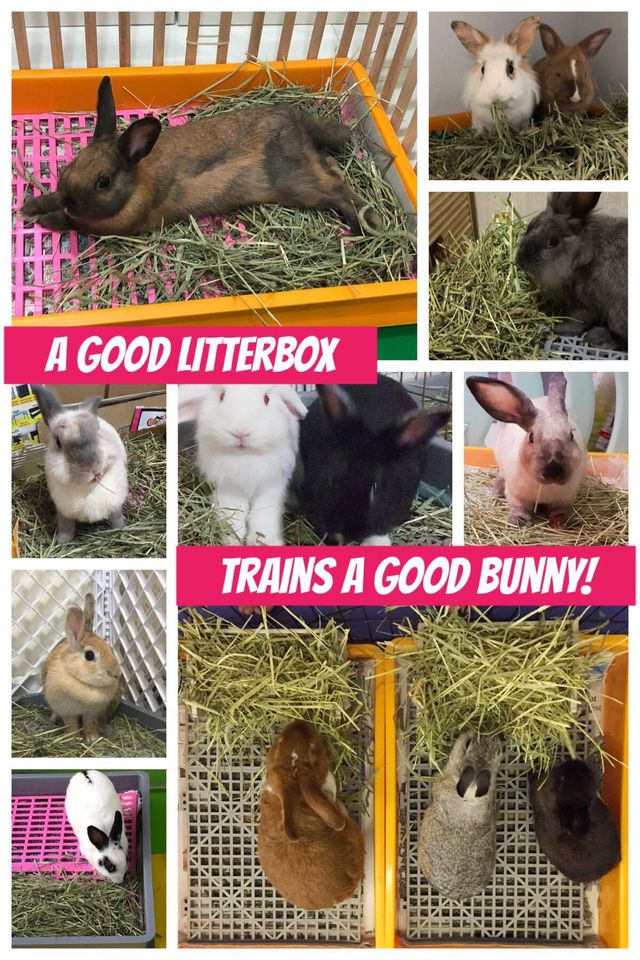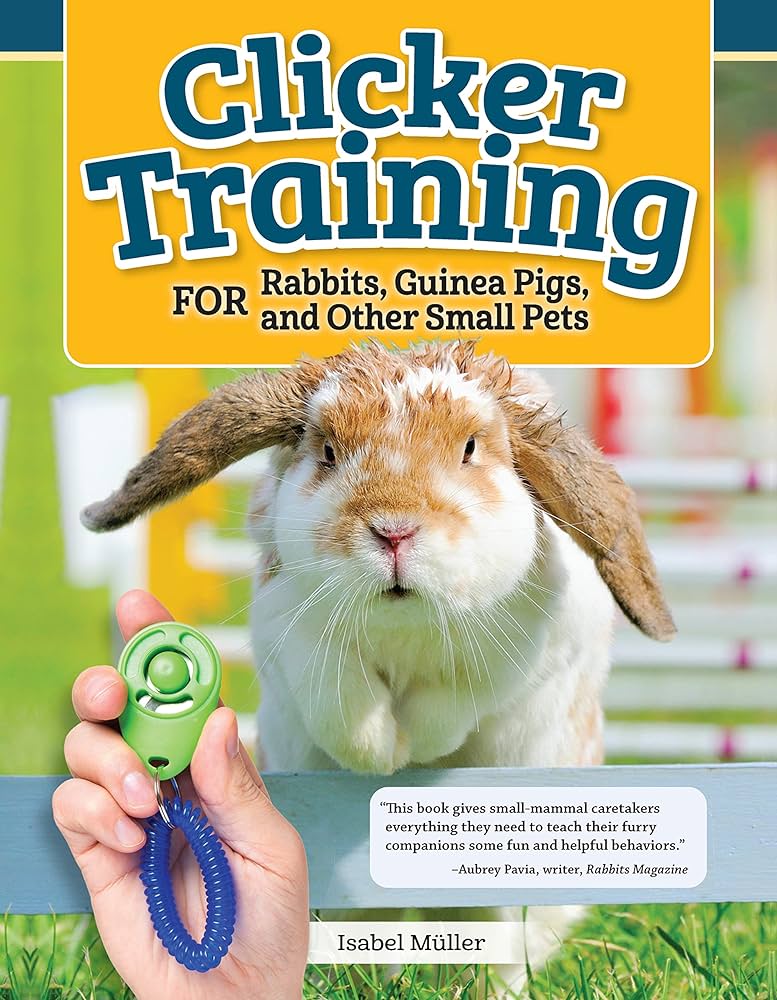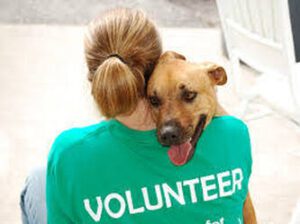Key Takeaways
-
Bunny litter box setup is crucial for a clean habitat and easier training.
-
Clicker training is a powerful tool to communicate and teach your rabbit desired behaviors.
-
Positive reinforcement, including treats and affection, is essential for successful rabbit training.
-
Short training sessions help maintain your rabbit’s attention and increase learning efficiency.
-
Each rabbit is unique, so tailor your training techniques to your bunny’s personality and preferences.
Jump Right In: Training Your Bunny the Right Way
When it comes to training your bunny, it’s important to start on the right foot. Rabbits are intelligent creatures, and with the correct approach, you can teach them a variety of behaviors that will make your life together more harmonious. The key to success is understanding your bunny’s needs and how to communicate effectively with them.

“LITTER-TRAINING – Bunny Wonderland” from bunnywonderlandsg.com and used with no modifications.
Litter Box Basics: Quick Set Up Guide
Before diving into the intricacies of behavior modification, let’s address a fundamental aspect of rabbit care: the litter box. Proper setup is not just about cleanliness; it’s about creating an environment where your bunny feels comfortable and safe to do their business.
First, you’ll want to select a litter box that’s the right size for your rabbit. It should be large enough for them to move around in but not so large that they can’t easily hop in and out. Place the litter box in a corner of their enclosure that they’ve already chosen as their bathroom spot, if possible, as rabbits tend to be creatures of habit.
When it comes to litter, opt for a paper-based or wood pellet option that’s safe for rabbits. Avoid clumping cat litter or anything with strong odors, as these can be harmful to your bunny’s respiratory system. Fill the litter box with a thin layer of litter and add a handful of hay on top to encourage your rabbit to spend time in the box and subsequently use it as their bathroom.
Example: If your rabbit has a favorite corner to do their business, place the litter box there. Rabbits often choose a specific spot to relieve themselves, so by aligning with their natural choice, you’ll make the litter training process smoother.
Clicker Training: The Whys and Hows
Now, let’s shift gears to a fun and effective training method: clicker training. This technique uses a small hand-held clicker to communicate with your rabbit. The click sound becomes a signal that a treat is on its way, which encourages your bunny to repeat the behavior that earned them the click.
Start by ‘charging’ the clicker. Every time you click, give your rabbit a small treat. Do this repeatedly until you see your bunny react to the clicker sound, expecting a treat. This is the foundation of clicker training and the first step in creating a language that both you and your bunny understand.
Maximizing Positive Reinforcement for Better Results
Positive reinforcement is the cornerstone of rabbit training. This means rewarding behaviors you want to encourage, and it’s much more effective than punishment for behaviors you don’t want. Rabbits respond well to treats, but they also appreciate social interaction and gentle petting.
When your rabbit performs a desired action, immediately click and follow with a treat. The timing of the click is critical—it must occur as the behavior happens, so your bunny understands what action is being rewarded.
Effective Training in Short Bursts
Rabbits have short attention spans, so keep training sessions brief. About five minutes at a time is a good rule of thumb. You can have multiple short sessions throughout the day, which can be more productive than one long session.
Remember, the goal is to make training a fun and rewarding experience for your bunny. If they start to show signs of frustration or boredom, it’s time to take a break and try again later.
Location, Location: Strategic Placement for Success
Choosing the ideal location for your rabbit’s litter box isn’t just about convenience; it’s about tapping into your bunny’s natural instincts. Rabbits are prey animals and prefer to have a clear view of their surroundings while they’re vulnerable. Place the litter box in a quiet, secure corner where your rabbit can see anyone approaching but isn’t in the middle of high traffic areas. This will help them feel safe and encourage consistent litter box use.
Additionally, if you have more than one level in your rabbit’s habitat, you might want to consider placing a litter box on each level. Rabbits might not always want to hop down a ramp just to use the bathroom, and providing options prevents accidents and reinforces good litter habits.

“Clicker Training for Rabbits, Guinea …” from www.amazon.com and used with no modifications.
The Magic of Clicker Training: Speak Your Bunny’s Language
Clicker training is like magic; it opens up a line of communication between you and your rabbit that’s clear, direct, and incredibly rewarding. By using a clicker, you’re essentially ‘talking’ to your bunny in a language they can understand—one that’s consistent and immediate. Learn more about litter training your rabbit and how it can enhance your training sessions.
Understanding the Clicker Training Method
Understanding clicker training starts with recognizing that it’s a form of marker training. The click sound marks the exact moment your rabbit does something right, bridging the gap between the behavior and the reward. It’s a form of positive reinforcement that’s precise, and because timing is everything, it helps your bunny learn faster.
Shaping Behavior: Step-by-Step Techniques
Shaping behavior with a clicker is about breaking down a complex action into smaller, manageable parts. For instance, if you want to teach your rabbit to spin in a circle, you’d start by rewarding any slight turn they make. Gradually, you’d require more of a turn before the click and treat are given, until they’ve made a full circle. This step-by-step process is called shaping, and it’s incredibly effective with patient and consistent practice.
From Simple to Complex: Building Your Bunny’s Skills
Begin with simple commands like ‘come’ or ‘sit’ to get your bunny used to following directions with the help of the clicker. Once they’ve mastered the basics, you can move on to more complex tricks like jumping through hoops or running an agility course. With each new skill, you’ll be enhancing their mental stimulation and deepening your bond.
Love and Learning: The Role of Affection in Training
Affection plays a huge role in rabbit training. While treats are a clear motivator, your bunny also craves your attention and love. Incorporating petting and cuddles into your training sessions can make them even more enjoyable for your furry friend, and it helps reinforce the bond between you.
Bonding with Your Bunny through Training
Training isn’t just about teaching your rabbit new tricks; it’s also a bonding activity. The time you spend together during these sessions is invaluable. Your bunny learns to trust you and feels more comfortable in your presence. This trust is the foundation of a strong relationship with your pet.
Using Treats and Affection to Reinforce Good Behavior
When your rabbit does something you’ve asked, it’s important to reward them quickly. Use their favorite treats to ensure they understand what behavior earned them the reward. But don’t forget to mix in plenty of affection—stroke their fur, speak to them in a soothing voice, and give them gentle attention to show your approval.
Short and Sweet: Keeping Training Sessions Productive
Keeping your training sessions short and sweet is essential for maintaining your rabbit’s interest and enthusiasm. Rabbits can get bored or stressed if training goes on for too long, which can make them less likely to engage in future sessions. Instead, aim for multiple short sessions throughout the day, which can help reinforce behaviors without overwhelming your bunny.
Why Brevity Leads to Success in Rabbit Training
Short training sessions are successful because they align with your rabbit’s natural attention span. By keeping training brief, you’re more likely to have your bunny’s full attention, making it easier for them to learn and remember new behaviors. It’s about quality over quantity—focused, enjoyable training is far more effective than long, tedious sessions that could end up being counterproductive.
For example, if you’re working on litter training, spend a few minutes several times a day guiding your rabbit to the litter box and rewarding them for using it. This consistent, positive reinforcement will help solidify the behavior without tiring out your bunny.
Critical Elements of an Efficient Training Session
Efficiency in rabbit training isn’t about rushing through the process—it’s about making the best use of time and resources. Key elements include a distraction-free environment, a clear plan of what behaviors you’re working on, and having treats and the clicker on hand. It’s also crucial to end on a positive note, ensuring your bunny associates training with positive experiences.
Adapting Your Strategy for Different Bunny Personalities
Just like people, every bunny has its own personality. Some rabbits may be shy and need more gentle encouragement, while others may be bold and adventurous. Pay attention to how your rabbit responds to different types of training and adjust your methods accordingly. A timid rabbit may need more reassurance and might respond better to a quieter, calmer training session, whereas an outgoing bunny might enjoy more challenging tasks and a lively environment.
Consider your rabbit’s favorite treats, too. Some may do anything for a slice of banana, while others might prefer a piece of apple or a few pellets. Using their preferred treats can make a significant difference in their engagement during training.
Finally, observe your rabbit’s energy levels throughout the day and schedule training sessions accordingly. A more active rabbit may learn best during their peak hours, while a more relaxed bunny might benefit from training during quieter times.
FAQs
Whether you’re a seasoned rabbit owner or new to the world of bunny care, questions are bound to arise. Here are answers to some of the most common queries about rabbit training and behavior modification.
How long does it typically take to litter box train a rabbit?
Litter box training a rabbit can take anywhere from a few days to a few weeks. It largely depends on the individual rabbit’s personality and how consistently the training routine is implemented. Remember, patience and positive reinforcement are your best tools during this process.
Can clicker training be used for behaviors beyond litter box use?
Yes, clicker training can be used to teach a wide range of behaviors, from simple commands like “come” and “sit” to more complex tricks such as jumping through hoops or navigating an agility course. The principles of clicker training—timing, consistency, and positive reinforcement—are universal and can be applied to almost any behavior you want to encourage.
Furthermore, clicker training can be used to discourage unwanted behaviors by redirecting your rabbit’s attention to a positive action and rewarding that instead. It’s a versatile method that can enhance your rabbit’s overall behavior and well-being.
What are the indicators that my rabbit is responding well to training?
Your rabbit is responding well to training if they are eager to participate, show signs of understanding the tasks, and consistently perform the desired behaviors. Look for signs of excitement when the clicker or treats come out, as well as an overall positive demeanor during training sessions. If your rabbit seems stressed or disinterested, it might be time to reassess your approach.
How can I find the right type of litter for my rabbit?
To find the right type of litter for your rabbit, choose products that are safe if ingested, as rabbits often nibble on their litter. Paper-based or hardwood pellet litters are generally recommended because they are absorbent, control odor well, and are digestible if accidentally consumed. Avoid clay-based and clumping litters, as well as those with added chemicals or fragrances, as these can be harmful to your rabbit’s health.
Is it possible to train older rescue rabbits?
Yes, it is absolutely possible to train older rescue rabbits. While it may take a little more time and patience, older rabbits can learn new behaviors and habits. It’s important to build trust with a rescue rabbit first, as they may have had negative experiences in the past. Once a bond has been established, training can proceed much like it would with a younger rabbit.


